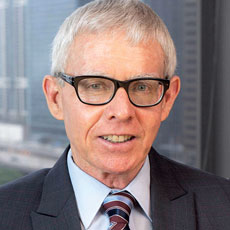
The administrators of long-term care facilities likely know that historically, the professional cleaning industry has been slow to change. Many of the same cleaning machines and products are marketed year after year.
But this all changed about a decade ago when the industry “went green.” Today, new environmentally preferable cleaning chemicals, tools, and equipment are introduced just about every year.
For instance, more manufacturers are now introducing an entirely new type of green cleaning system, referred to as aqueous ozone cleaning. Manufactured by different companies, a limited number of these systems have already been certified by Green Seal®, which verifies for long-term care administrators that these systems are green and effective.
And leading sustainability advocates in the professional cleaning industry, such as Stephen Ashkin, known as the “father of green cleaning,” have praised this technology because it also promotes sustainability. Says Ashkin, “With these systems, no chemicals are required, which means no chemical ingredients, many of which are nonrenewable, are used; no chemical containers need to be delivered, eliminating fuel needs; and there are no boxes or packaging materials required.”
Because this new technology appears to have environmental benefits, many within and outside of the professional cleaning industry have taken note. Many are even referring to aqueous ozone as “greener than green cleaning.” So, just how effective is aqueous ozone?
Activated water
Before answering the question of aqueous ozone’s effectiveness, let’s look a bit closer at the origins of this cleaning technology and other cleaning systems that clean without the traditional chemicals now being used in long-term care locations. Often these technologies that require no cleaning chemicals are referred to as “activated water,” “enhanced water,” “no-chemical,” and now “aqueous ozone” cleaning.
“Applying a small amount of electricity to water breaks down the water’s molecules, lowering its natural surface tension and creating positively and negatively charged water ions,” says Robert W. Powitz, Ph.D., MPH. “When applied to a surface in this electrolyzed form, [the] water can spread to contact dirt. . . . The charged ions in the water attach to the dirt and help lift it from the surface.”*
Realizing these benefits, and with considerable emphasis being placed on green cleaning systems and technologies in the professional cleaning industry, manufacturers have developed the following equipment based on activated water that should be considered for the cleaning and maintenance of long-term care facilities.
Electrolyzed water: With this type of system, an electrical charge is applied to water. The process creates a solution, similar to the one described by Powitz, that has shown to have satisfactory results cleaning many surfaces, especially floors in schools and commercial facilities. In many cases, the process also helps eliminate floorcare chemicals, which are among the most powerful and potentially harmful cleaning agents in the professional cleaning industry.
Electroporation: In the simplest terms, this type of system uses a low level of electricity to “zap” germs and bacteria on surfaces. This electrical charge breaks down the walls of the bacterial cells and kills them, which are then washed from the surface using plain tap water. According to Powitz, this technology “does not require contact or dwell time for efficacy,” meaning it kills pathogens instantly.**
Aqueous ozone: Using electricity, this type of system adds an extra atom to water, converting it into ozone. As aqueous ozone is applied to a surface, the extra atom attacks contaminants on the surface and eliminates them, leaving just oxygen and water, which later evaporate. Karen Vickery, Ph.D. from Macquarie University in Sydney says, “At appropriate concentrations, [aqueous] ozone injected in water destroys all microorganisms, viruses, oocysts, and pyrogens” on surfaces.***
While there is general consensus that aqueous ozone is an effective broad-spectrum antimicrobial agent that can be used to target bacteria, viruses, and other contaminants, such as those mentioned by Vickery, “building managers and cleaning professionals should know that aqueous ozone is not now recognized as an EPA-registered disinfectant,” says Matt Montag, national distribution sales manager for CleanCore Technologies, which manufactures aqueous ozone cleaning systems.
Montag adds, “While aqueous ozone is a very green way to clean and sanitize surfaces, if a disinfectant is called for, for instance in a medical center, then an EPA-registered disinfectant must be used.”
All of the “activated water” technologies discussed here have shown great promise, which is the key reason more manufacturers are embracing this technology. While some of the systems can be used only on floors or for specific surfaces, others can be used on a variety of surfaces, from floors and walls to carpet and restroom fixtures.
Robert Kravitz is a frequent writer for the professional cleaning industry.
*“Activated and Electrolyzed Water: A Brief Review of a New Generation of Cleaners and Sanitizing Agents,” by Robert W. Powitz, Ph.D., MPH, published in the August/September 2010 issue of Food Safety Magazine.
**In contrast, when using a disinfectant, users are advised to leave the disinfectant wet on the surface for 5 to 10 minutes, to kill pathogens, before wiping.
***Oocysts are a type of parasite, and pyrogens are a bacterium that can cause illness.



